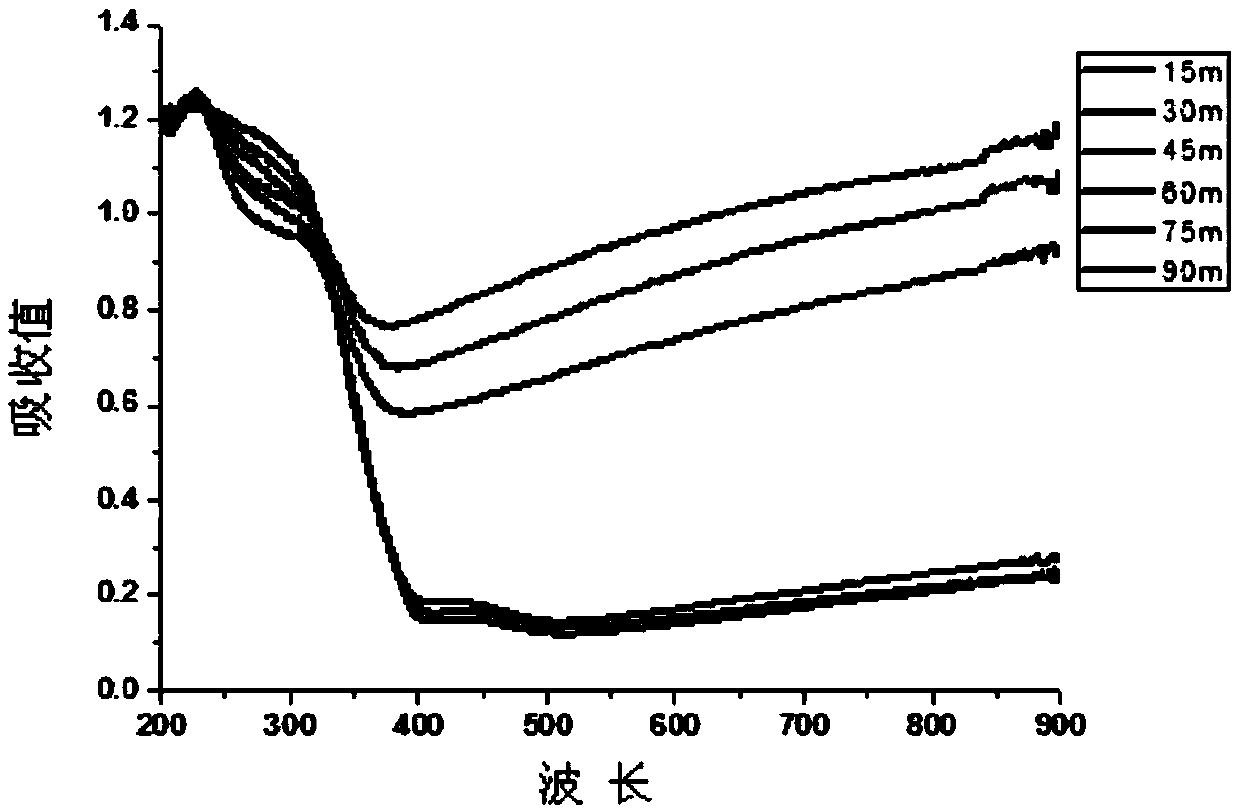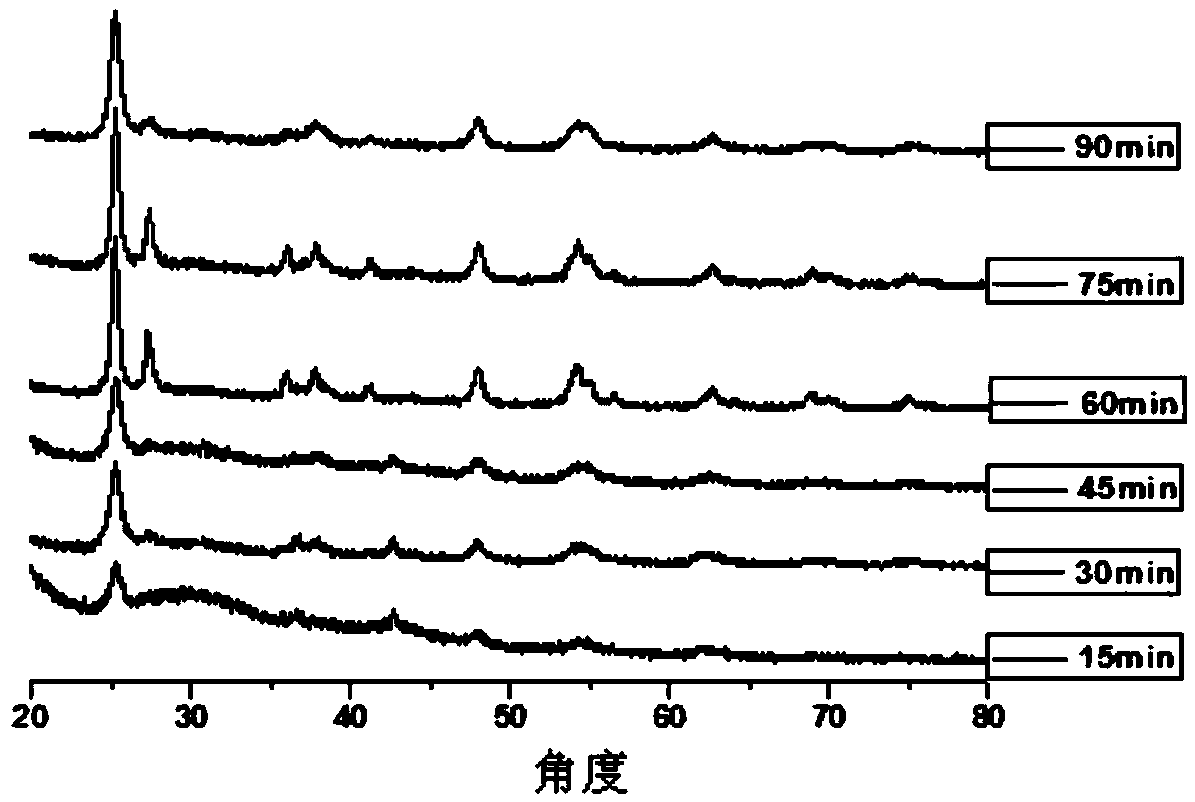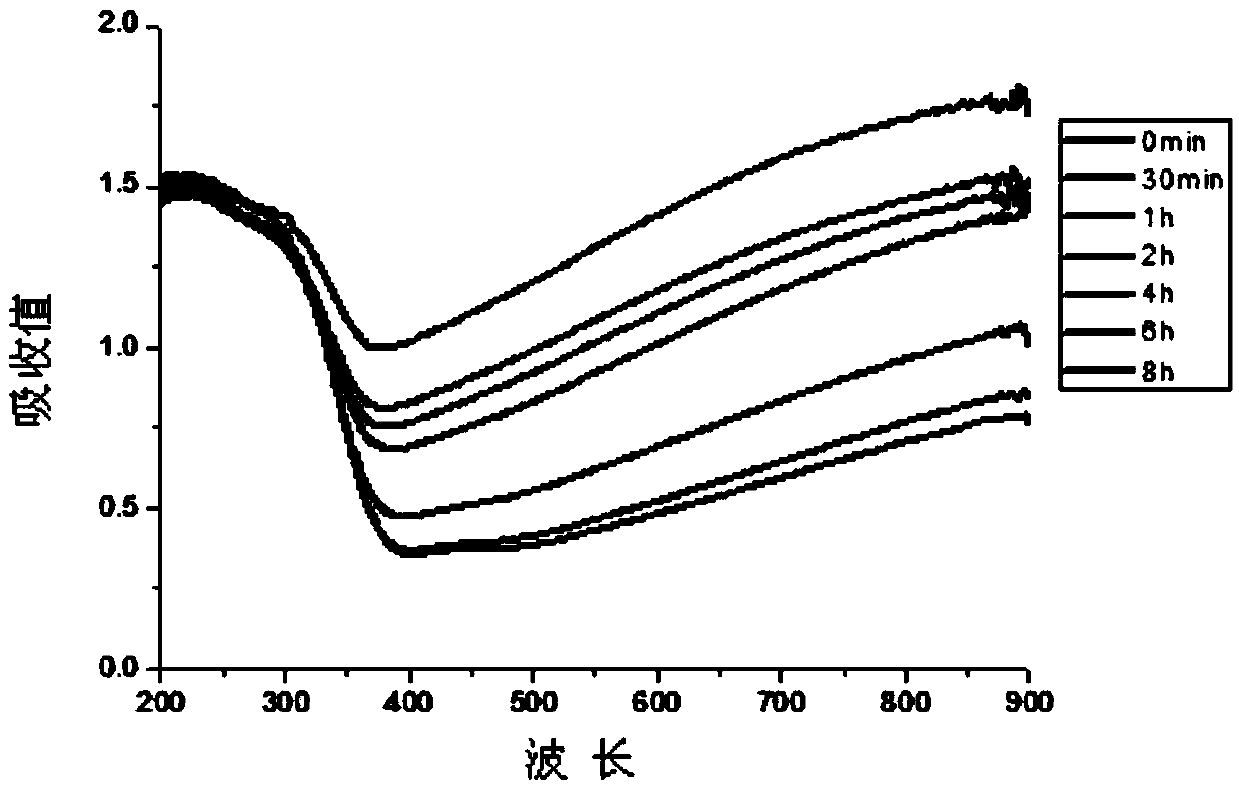Preparation method for nitrogen-doped anatase titanium dioxide
An anatase type, titanium dioxide technology, applied in chemical instruments and methods, chemical/physical processes, physical/chemical process catalysts, etc., can solve the problems of complex experimental process, low doping efficiency, cumbersome operation, etc., and achieve slowdown rate , increase the content of nitrogen, prevent the effect of recombination
- Summary
- Abstract
- Description
- Claims
- Application Information
AI Technical Summary
Problems solved by technology
Method used
Image
Examples
Embodiment 1
[0036] (1). Weigh 7 parts of titanium nitride with an average particle diameter of 20nm, place them in a muffle furnace, and calcinate at a constant temperature of 380°C for 30 minutes, and then lower to room temperature to obtain sample 1 and test sample 1. by figure 1 It is known that the anatase-type titanium dioxide peak held at a temperature of 380°C for 30 minutes and retains part of titanium nitride, which still has a high absorption of visible light.
[0037] (2). Place the above sample 1 in a muffle furnace, calcinate at a constant temperature of 350°C for 1 hour, then cool to room temperature, take the sample out of the muffle furnace, and obtain sample 2, which is a nitrogen-doped anatase type Titanium dioxide material, made of image 3 It is known that the test sample 2 has not formed a 400nm visible light absorption platform after the second oxidation and calcination for 1 hour. by Figure 4 It is known that sample 2 still contains titanium nitride after being kept a...
Embodiment 2
[0039] (1). Weigh 8 parts of titanium nitride with an average particle diameter of 50nm, place them in a muffle furnace, and calcinate at a constant temperature of 420°C for 30 minutes, and then lower to room temperature to obtain sample 1 and test sample 1.
[0040] (2). Put the above sample 1 in a muffle furnace, calcined at a constant temperature of 350℃ for 2h, then lower to room temperature, take the sample out of the muffle furnace, and obtain sample 3, which is a nitrogen-doped anatase type Titanium dioxide material, made of image 3 It is known that the test sample 3 has not formed a 500nm visible light absorption platform after the second oxidation and calcination for 2 hours. by Figure 4 It is known that sample 3 has almost no titanium nitride after being kept at a temperature of 350°C for 2 hours.
Embodiment 3
[0042] (1). Weigh 8.5 parts of titanium nitride with an average particle size of 40nm, place it in a muffle furnace, reduce to room temperature, and calcine at a constant temperature of 395°C for 30 minutes to obtain sample 1 and test sample 1.
[0043] (2). Place the above sample 1 in a muffle furnace and calcinate at a constant temperature of 350°C for 4 hours. Take the sample out of the muffle furnace and cool to room temperature to obtain sample 4, which is nitrogen-doped anatase titanium dioxide. Material by image 3 It is known that the test sample 4 has formed a 450nm visible light absorption platform after the second oxidation and calcination for 4 hours. by Figure 4 It is known that there is no titanium nitride peak in sample 4 after a constant temperature of 350°C for 4 hours.
PUM
 Login to View More
Login to View More Abstract
Description
Claims
Application Information
 Login to View More
Login to View More - R&D
- Intellectual Property
- Life Sciences
- Materials
- Tech Scout
- Unparalleled Data Quality
- Higher Quality Content
- 60% Fewer Hallucinations
Browse by: Latest US Patents, China's latest patents, Technical Efficacy Thesaurus, Application Domain, Technology Topic, Popular Technical Reports.
© 2025 PatSnap. All rights reserved.Legal|Privacy policy|Modern Slavery Act Transparency Statement|Sitemap|About US| Contact US: help@patsnap.com



